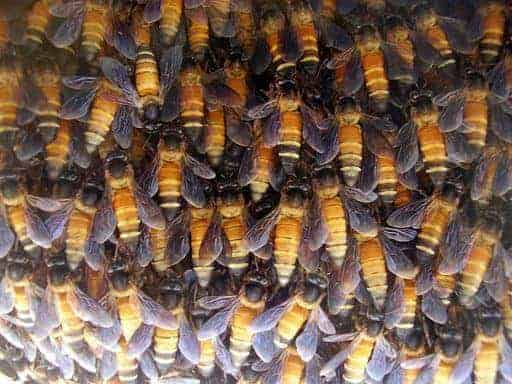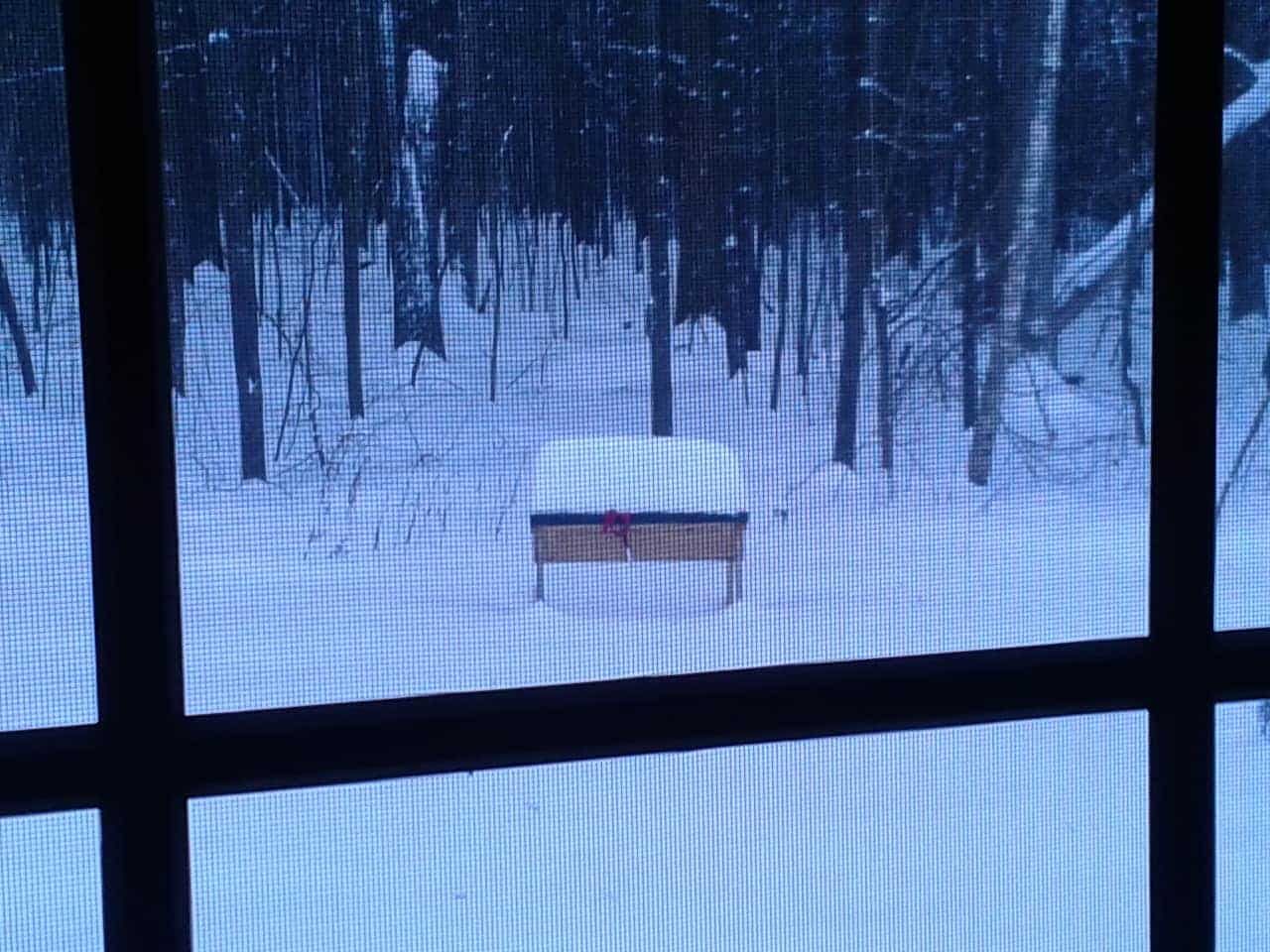The mystery of honey bees in winter
For the layman, it’s a bit of a mystery. Those little creatures we associate with beautiful summer days return every year. So, when the snow lay deep around a hive, how do they survive? The don’t come out of the hive – it’s too cold and there’s no flowers to forage anyway.
Do bees sleep? How do bees stay warm?
The answer is lay in the “winter cluster”,
Preparation
Getting bees through the winter is one of the biggest challenges facing any beekeeper in cold climates. Bees are unable to fly below 40 degrees Fahrenheit. Instead, they hang together in a “winter cluster”, called a beard, inside the hive. This cluster keeps them warm as the outer bees are constantly rotating toward the inside. The queen, of course, remains in the warm center of the beard. Also, in an incredible adaptation, when bees are clustered in the beard, they detach their wing muscles from their spines so they can shiver them for warmth without flying.

My job as beekeeper is to make sure they have enough food within cluster-moving distance, have a dry hive, and that the hive is insulated and protected from wind. Not all of this is as easy as it sounds.
Food, it turns out, is the easy part. Since I elect to leave honey stores in the hive until spring, there was plenty for them and I made sure that all honey stores were nestled together adjacent to the bee cluster so they’d be able to move as a cluster to each successive comb as necessary. Really this meant I checked to be sure the bees did what bees have always done – and they did. Sadly, my failing in other areas meant they didn’t actually need all the honey. A sweet treat for me, but not what I’d intended and thus enjoyed with some amount of guilt and sadness.
Insulation was also simple. Since I use a top bar hive, I was able to put a piece of pink panther, cut to fit the space, in a sealed trash bag and put it on top of the bars with the cover over it. I also moved the follower boards inside the hive to be as close to the bee cluster as possible without crushing them, ensuring they’d have the smallest space possible to heat and wouldn’t use up all their energy with the effort of staying warm.
Keeping the interior of the hive dry is incredibly important. During the warm months, bees are able to control the climate, including humidity, but not so in the cold. Dampness is death for bees. I had no idea how much the wind and rain swirl in my yard. I though that with the hive cover and with the hive positioned so it’s somewhat protected by trees the rain wouldn’t get in. I was wrong, but I didn’t know it yet.
One additional measure I took was to put a piece of hardware mesh over the entrance hole. This prevented mice from being able to take up residence in the hive, but also provided just enough space in the holes of the mesh for the bees to get out on a warm day to stretch their wings and poop. Yes, poop. Bees will not soil their hive, so on a warm day in the middle of the cold season, they will come out and relieve themselves.

All my prep work done, I left the hive alone all winter and prayed and hoped and worried about if they’d survive.
Spring Arrives
Finally, the first warm day! I started by taking the shutter off the window and was immediately upset by what I saw. Through the plexiglass I could tell the hive was damp. Really damp. I could see actual water droplets…and dead bees that looked moldy. Choking back tears and hoping maybe not all was lost, I pulled off the cover and insulation and took out one bar. More dead bees and so much dampness. Green and moldy with dampness. My heart sank and I cried for all my lovely bees who tried so valiantly and whom I failed.
The particular winter in question was one of those winters that take a while to get going. It was unseasonably warm and rainy for a good portion of December and January. There was still an incredible amount of honey, perfectly edible and capped in comb, so it seemed likely the bees didn’t survive long enough to even see snow.
Once I got passed my grief, I started to think about what I should’ve done differently. First, I took a look at my bee source. As I mentioned in my last post, it turned out that they came from Tennessee, not Maine, and that was a problem, but Tennessee does experience some inclement weather and thus probably not the root cause of this particular situation. It was the root cause of a different issue, but that’s another post for another day.
Then I started thinking about all the mold and water droplets. And as spring wore on, I started watching the wind swirl rain around the yard. Then I knew.
I should have found a way to block the wind and rain from the entrance. Maybe wrap a tarp around it? Or some kind of a sail in front of it? I wasn’t sure exactly what the solution should have been, but it was abundantly clear that my own ignorance of my yard and my rookie beekeeping status failed to protect my ladies from the rain entering their home. I’d killed them and they’d left me honey anyway. My heart broke and I vowed to try again and do better. I’m still trying, and still learning, but I know what I need to do now.
My search continues for suitable bees, as I mentioned in my last post, but now I know how to help them protect their home from the elements. Next time I get honey from the hive, I’ll have earned it for being a good bee momma and not as a consolation prize for trying.
And even though it was horribly sad that my ladies didn’t survive, it taught me to be resilient. The bees keep trying and working even though we pollute their environment in countless ways; the least I can do is keep trying to help them. Their presence in my yard, and in my life, brought me joy. Just because it ended in heartache this time was no reason to quit – the bees wouldn’t. So, I began again…
